This post contains affiliate links; if something is purchased I receive a commission at no extra cost to you.
Being a history buff, I am very much interested in knowing the age of each pocket knife in my collection. While some knives are fairly easy to determine an exact age, others are more challenging and only rough time frame (plus or minus 15 years) can be established. Knowing the age of a knife gives insight such as the time period it came from (Civil War, Great Depression, etc.), who may have used it and what it may have “lived through.” There are many characteristics that help to shed light on the age of pocket knives. These characteristics are discussed below.
I learned about many of the following tips from my absolute favorite knife book; Levine’s Guide to Knives and Their Values. Even though they are out of print, they contain a wealth of knowledge and I highly suggest you pick up a copy wherever you can. I would suggest getting the 1st – 4th editions.
Handle Material
Handle materials like stag, horn and smooth bone have been around for hundreds of years and are generally not helpful when establishing an age. However, some handle material can be helpful. Smooth or sawcut bone that has grid lines in it, sometimes referred to as scored bone, appear on many early 19th century knives including barlows. Jigged bone (dyed, mechanically dimpled or gouged cattle bone) was introduced in the mid 1800’s and was used extensively until the 1950s. Many knife makers switched to cheaper jigged delrin (synthetic) handles after this time period.
Ivory and tortoise shell have been banned on the market for many years and usually dates a knife to the 19th century or even before!
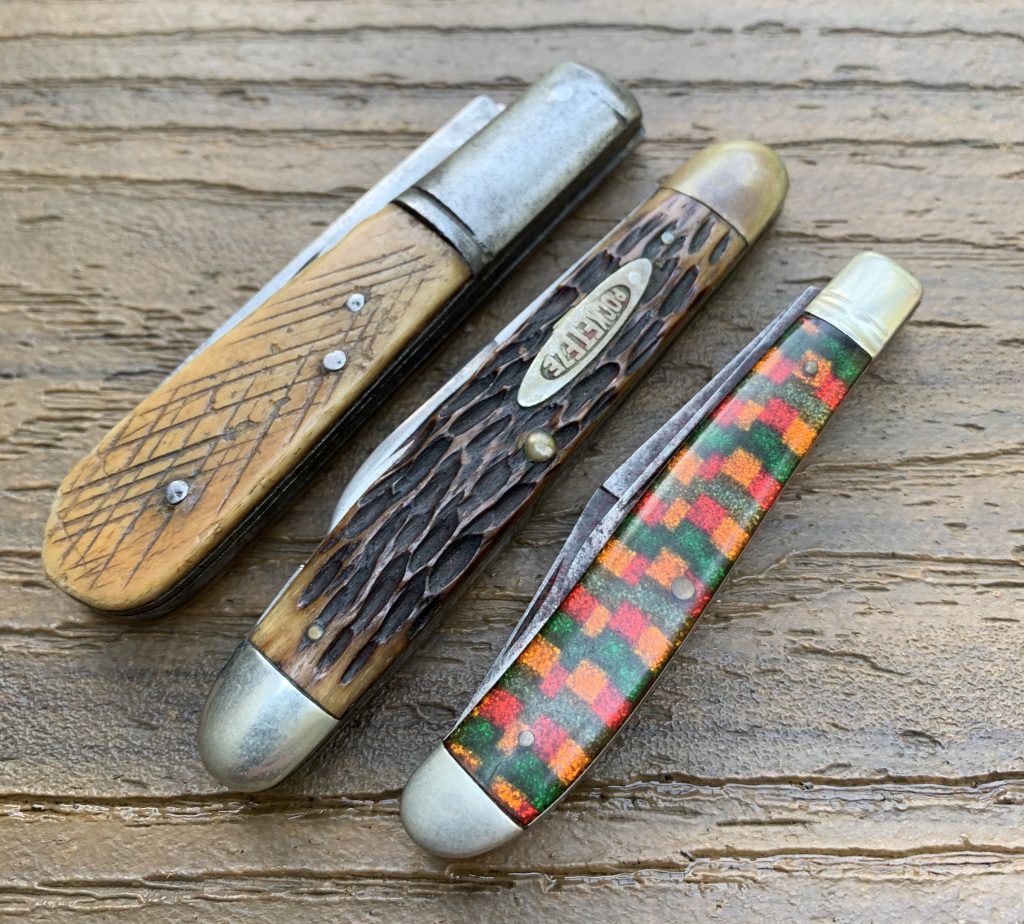
Celluloid, a plastic handle covering that can be found in many colors and designs, was first used in the 1870’s. Because it could be made into a wide variety of colors, it became a popular choice for knife handles. Celluloid was found in red, white and blue on patriotic scout knives as well as the collectible varieties of Goldstone and Christmas tree. Celluloid enjoyed its peak in popularity during the 1920s and 1930s and began to be phased out around 1940 due to its potential flammability and propensity to decompose over time.
Tang Stamps
Company Names – obviously knowing what company made the knife is one of the easiest ways to determine its age. For example, Ulster Knife Co was in business and made knives from 1876 through the 1970s. However, the fact that there are a few distinct tang stamps helps us to zoom in and get a better idea of when the knives were made. Knives marked “Ulster Knife Co” were made between 1876 and c. 1941 and knives marked “Ulster USA” were made after 1941. In addition, Case knives have a widely known tang stamp system that helps to date their knives. The “dot system” helps to identify the exact year a Case knife was made between the years 1970 to present. Goins’ Encyclopedia Of Cutlery Markings is an amazing resource when it comes to finding out when different companies made knives. This book is a must for every knife collector.
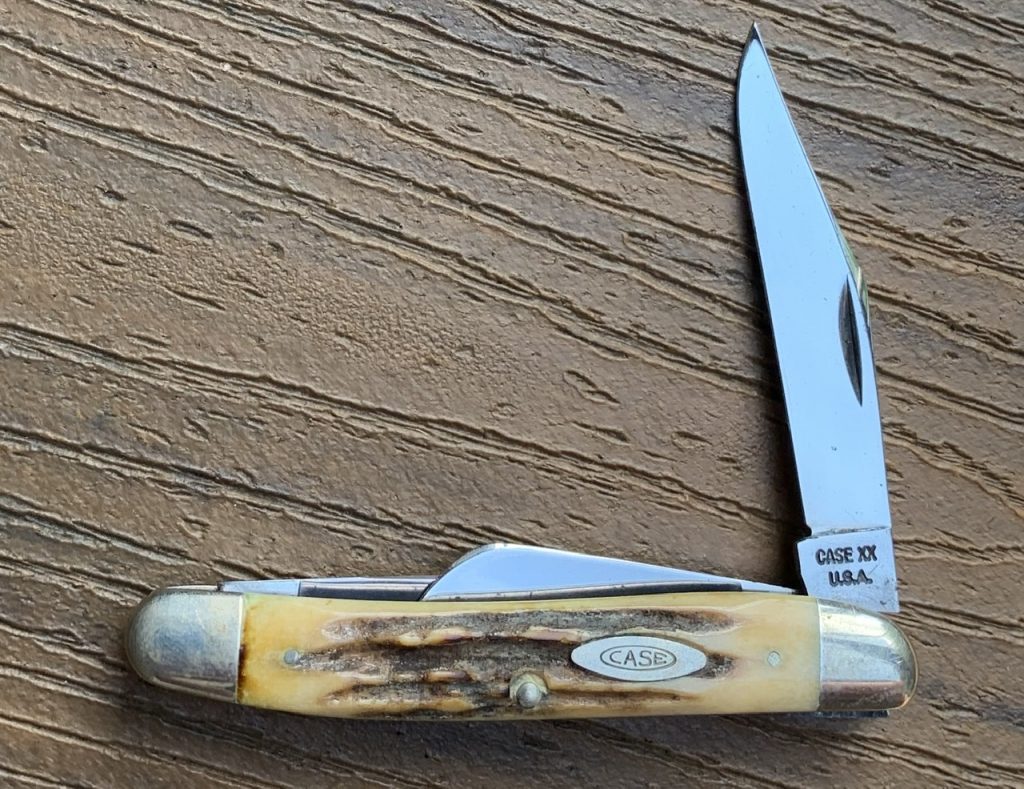
Patent numbers: usually six or seven digits, sometimes appear on the tang and may help to indicate age. Different patent numbers correspond to different years. For example, a patent number of 945010 was applied for in 1910. As a result, the collector would know the earliest date a knife could have been made. However, keep in mind that knives were typically made for several years after the patent was applied for.
In addition, the presence or absence of the word ‘England’ and ‘Germany’ on the blades of knives is significant as well. The United States passed the Tariff Act of 1890 and required all cutlery to display the country of origin on the tang stamp. As a result, any knife bearing stamps that include “Solingen, Germany” or “Sheffield, England” would be made post 1890.
The words Warranted and Celebrated were marketing terms that were added to knife markings and usually dates a knife to the 1880’s or before. The term “Cast Steel” on a knife indicates that it was made in the 1840s or before, usually in Sheffield.
Blade Kicks
Blade kicks are the strip of metal on the tang that prevents the blade edge from slamming into the backspring. Most modern pocket knives have an arching kick that sweeps out from the base of the tang and does not have any right angles. However, blades that have a rectangular kick, sometimes called a long square kick, indicate that a knife that was made in Sheffield before 1860. Some kicks are very small bumps and are located at the base of the tang, very near to the bolsters. In my experience, these features help the date a knife pre-1840.
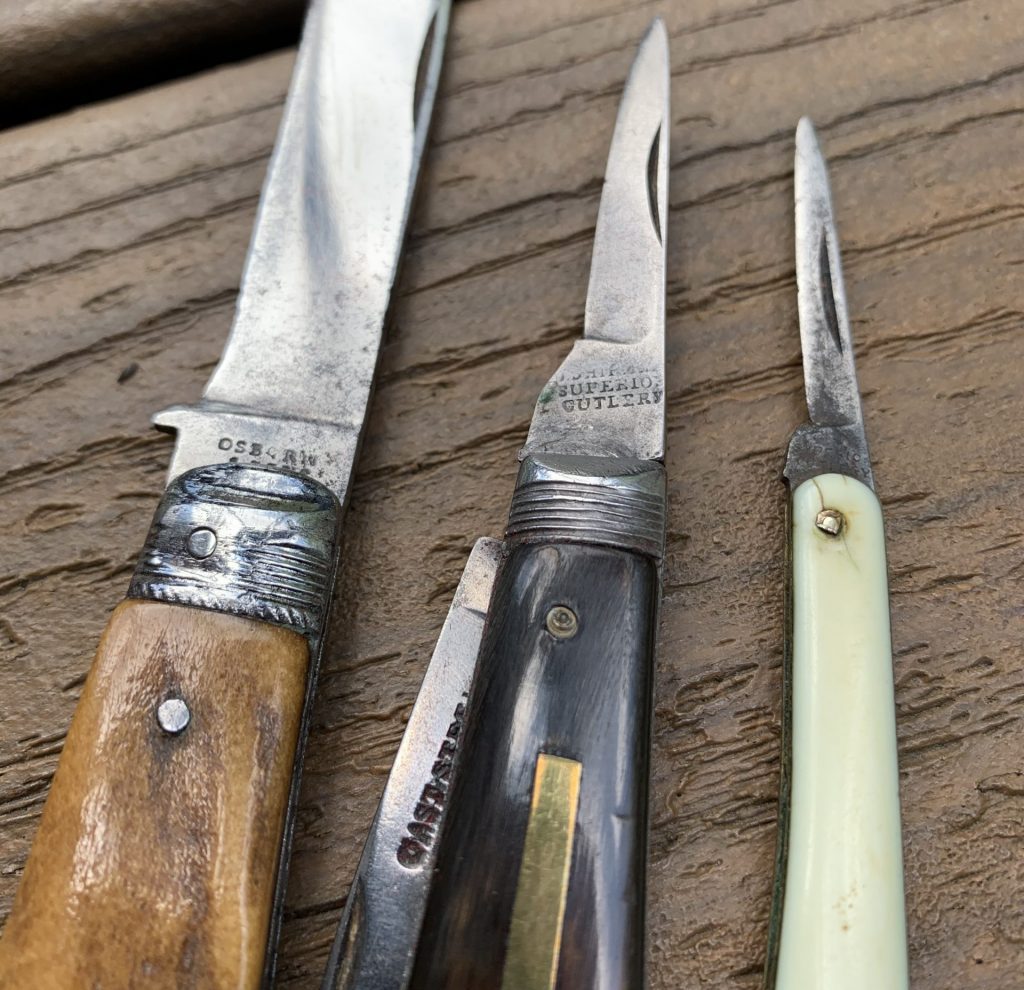
Knife Construction
Integral liners and bolsters: When you look at the bottom of most folding knives, you will see a clear line between the bolsters and the liners. This indicates that they are separate pieces. However, on many knives made before 1860, the lines and the bolsters will be one piece. This is referred to as integral liners and bolsters. Most of the knives that I have seen this construction on are Sheffield made knives.
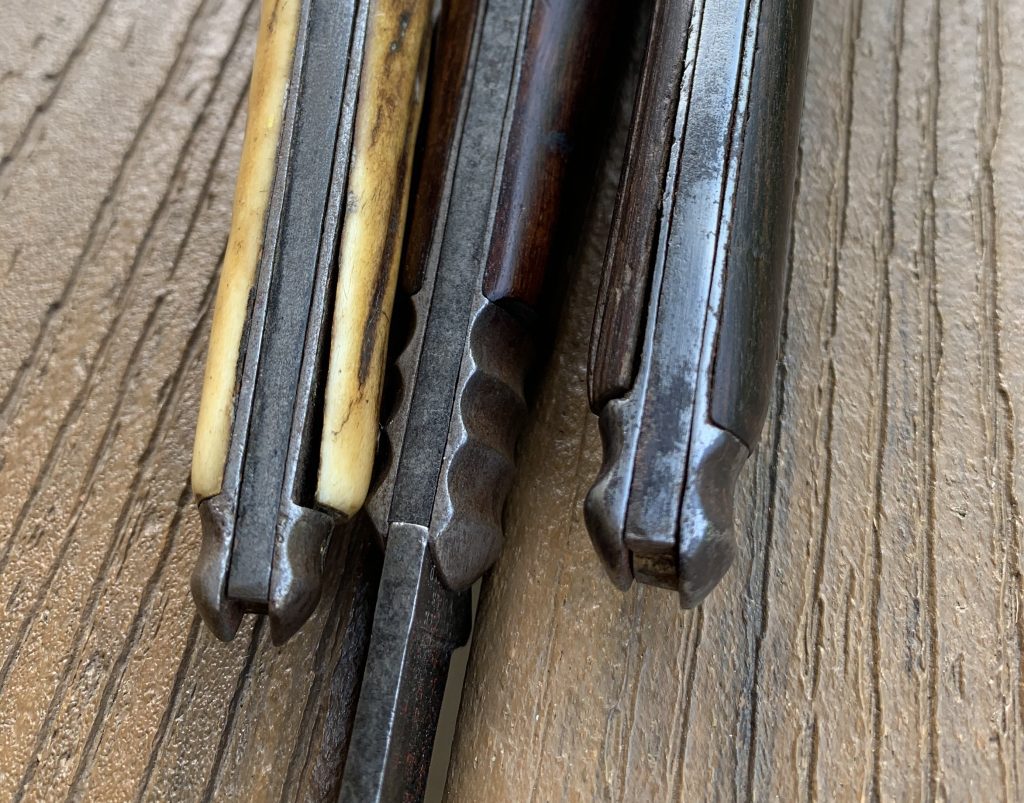
Shell Knives: A much later method of knife construction, started in the 1940’s are shell handled knives. These knives are most easily identified by finding small metal tabs on the very end of the bolsters. These tabs helped to fix the handles on the knives as one of the last steps in its construction. This method was invented in Germany and eventually licensed to Imperial Knife Co in the 1930’s. Colonial Knife Co applied for this patent in 1942 and this quickly became the preferred method of construction for most inexpensive knives through the 1980’s.
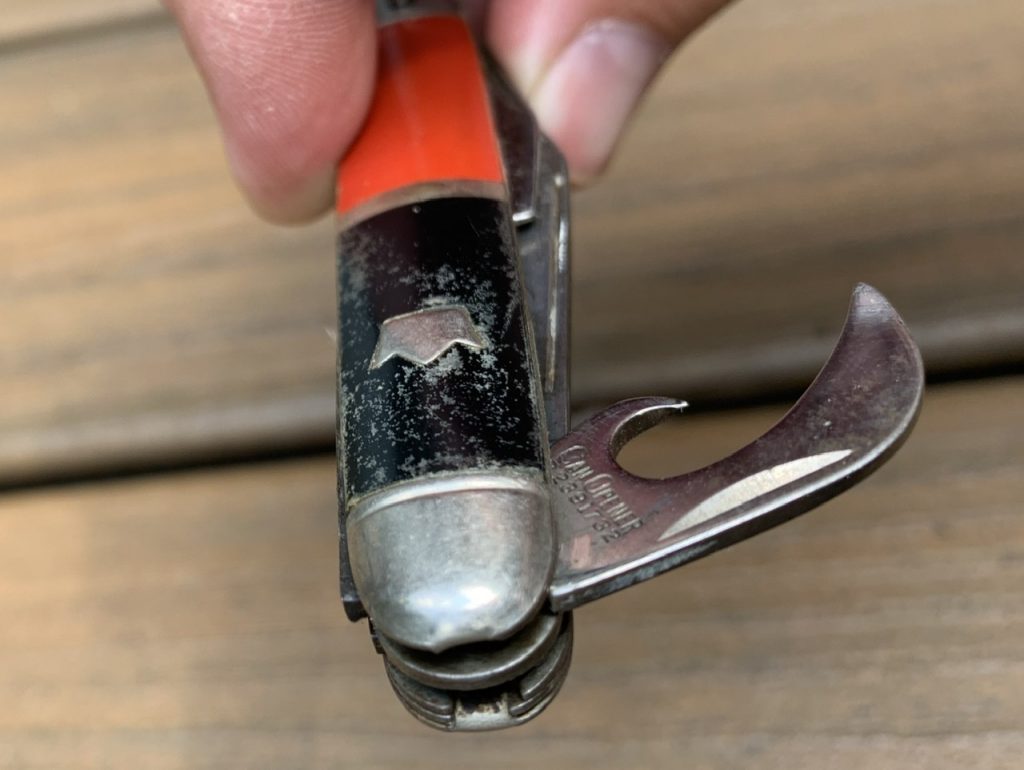
Summary
- Jigged bone – made post mid 1800s, replaced by cheaper materials in the 1950s (besides Case and a few others)
- Ivory handles – typically 1900 or before
- Celluloid – c. 1870s to 1940s
- Patent numbers – knife cannot be older than the date associated with the patent number
- Country of Origin (Germany or England) – on tang or blade – post 1890
- Warranted or Celebrated – usually pre 1880s.
- Long sqaure kick – usually before 1860
- Small bump kick near to bolster – usually pre 1840
- Integral liners and bolsters – pre 1860
- Shell handles with tabbed bolsters – 1930s – c1980.
What Else?
I am sure that I have not included every way to date a knife in this post. Also, some of the date ranges provided are best estimates. Any additions, comments or corrections? Let me know your thoughts in the comments below:
Back to blog
